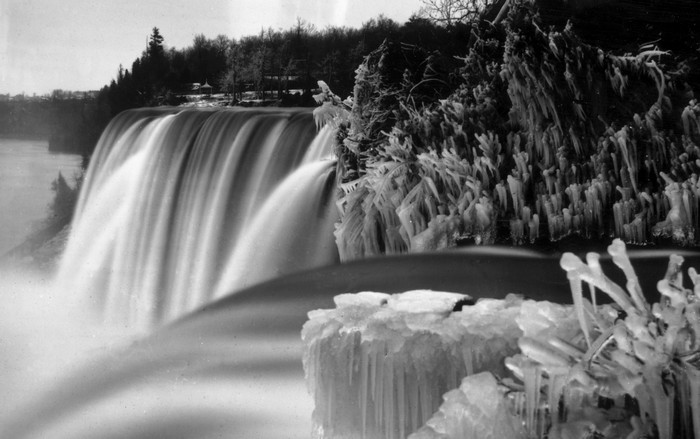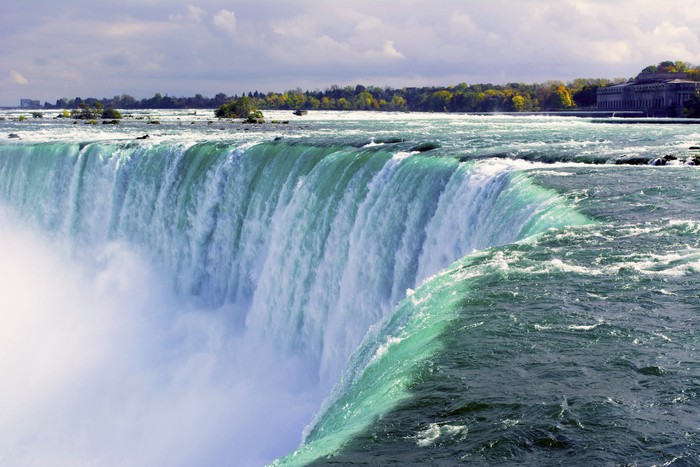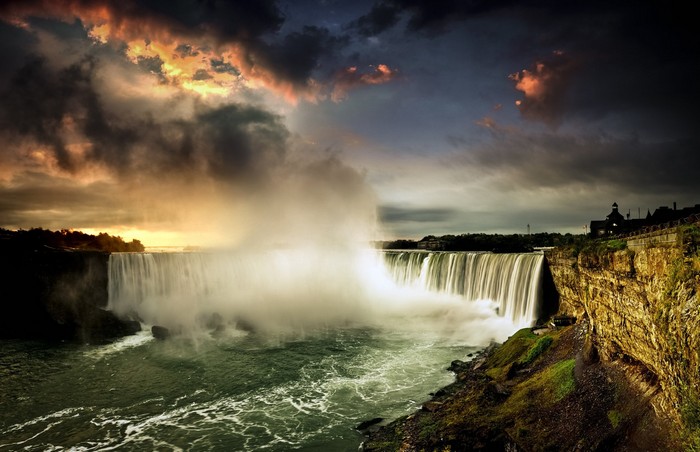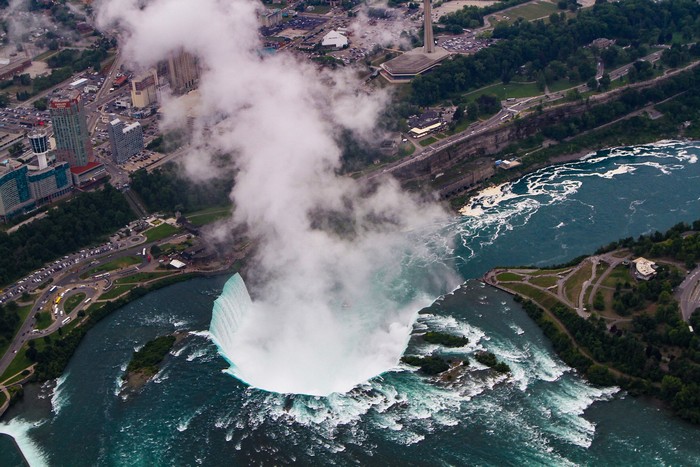Stunts Gone Wrong

For example, in 1984, a stuntman named Karel Soucek from Canada barely made it out alive after taking a trip down the fall in a barrel. Unfortunately, he died the following year in Texas at the Houston Astrodome while attempting to recreate his stunt. Also, Jesse Sharp from America tried to maneuver the fall with a canoe in 1990 and that was the last anyone saw of him.
Business As Usual

Those who observed as the American Falls was drained were reminded of the brute power of the waters. But for the authorities who dug out the bodies, it was just another day at work. Clearly, removing the loose rocks atop the fall was the first line of action.
Dangerous Methods

To do this, engineers were put in cages and lifted over the edge of the falls with cranes. Concurrently, a sprinkler system was installed to keep the layer of shale on the waterfall front moist. Experts say that the rock was getting too dry, making it more prone to erosion.
Work, Work, Intense work

In the meantime, workers began to drill the riverbed atop the American Falls. By the time they had drilled down to 180 feet, they commenced tests checking the rock’s absorbency levels. Somewhere else, surveyors took the chance to draw up the shape and form of the falls’ surface.
A New Attraction

While the falls were being surveyed, another set of workers began working on a walkway that would enable safe travel of visitors on the riverbed. The spectacle was open to tourists for the first time in 1969, 1st day of August. However, even with its burgeoning popularity, visitor numbers were still not as high as they used to be.
Further Research

Ultimately, researchers got down to studying the talus deposit at the bottom of the falls on the 19th of August. They expected to uncover the science behind the formation of the rock By digging into it. But it soon became clear that the clean-up project was more complicated than anticipated By the specialists.
Confusion or Complications?

Actually, in studying the falls, the engineers came to the conclusion that the talus had a significant role in offering support to the cliff surface behind. Riddled with the issue of removing them, a second plan was suggested By the authorities. They thought that building a permanent dam would raise the level of water in the basin, submerging the harmful rocks.
The Final Compromise

However, constructing a dam wouldn’t be a great solution because the American Falls would be weakened remarkably. As a result, the final decision was to leave the talus as is. However, the whole operation was not going to waste because the engineers salvaged the opportunity to carry out important preservation work on the face of the cliff.
Additional Measures

For six months, different teams utilized bolts, cables and anchors to make the American Falls stable. Someplace else, they installed sensors that would signal the authorities of there was an imminent landslide. And the work done By the crew has clearly helped in preserving the waterfall for decades and even forthcoming years.
Pure Intentions

Finally, the work came to completion in November, 1969. After the destruction of the cofferdam with dynamite, the American Falls regained its initial splendor. But at that time, the IJC thought it was trying to safeguard the attraction instead of making it artificial.
Adjustments

Funny enough, the Niagara Falls discovered By the Europeans centuries before was very different from the one present in 1969. The region had become industrialized quite early such that in the 1800s, efforts to conserve it had already commenced. So, the enterprises using the power generated By the currents simply moved downstream
Industry versus Conservation

And when the 20th century had just started, a notable quantity of water was being diverted from the rapids to provide power to several businesses. This pushed many to believe that the beauty of the natural attraction was fading. Hence, they began to deliberate on how to strike a balance between conservation and industry.
The Role of Industry

The industrialists opined that their plants played a notable role in conserving the falls as they reduced the amount of water cascading down the edge. And though, the rocks were eroding at a rate of four and a half feet yearly, the industrialists thought that a decrease in the water flow would help curb the problem.
Agreements and Strategies

Then, an agreement was reached between Canada and the US. Eventually, the two countries wished to continue industrializing the region while making the falls look untouched. How could the diversion continue without the slightest noticeable change in the appearance of the world-renowned attraction?
A Consensus

Ultimately, the U.S and Canada had a consensus on a solution. They would divert up to 75 percent of the water flowing to the falls in the evenings and during winter. At the times when visitors were most likely to be around, the diversion rate would be reduced to 50 percent.. Meanwhile, the edge of the Horseshoe falls was modified to make the flow appear more powerful.
Past Projects In The Present

It’s surprising that these diversions are still in existence right up to this moment. This implies that the water tourists see on the Niagara Falls is just a part of what is meant to flow down. Regardless, the flowing waters are still one of the most famous tourist destinations in the world. Visitors may get the chance to catch a glimpse of what lies beneath the falls soon enough.
The Plan

In 2016, an announcement released By the Niagara Frontier State Park Commission stated that they planned to completely halt the water flow again sometime soon. Over a hundred years before, there was a stone bridge that was built from the mainland to Goat Island. But By 2005, the construction had dilapidated to a point of no return.
A Project Encore

Hence, to construct a replacement for the bridges, the commission declared that the engineers would have to halt the water flow over the falls again. To commence this, the authorities had plans of building a second cofferdam in the year 2019. But they could not get the $30 million needed for the project. This meant a postponement of the project eventually.
Hope for the Future

The officials say the project is still on the table. They’re also of the belief that the dewatering to be done in the future could positively influence tourism more than the Previous tries. However, since 1969, an indefinite number of people have disappeared or been declared dead. There may be more horrifying secrets to be uncovered beneath the falls.
Read Also:
Young Boy Remembers Thrilling Details Of His Past Life, Then Proves He Was Reincarnated
Diver Discovers Old Airplanes Beneath The Pacific and Uncovers The Mystery Behind Them
